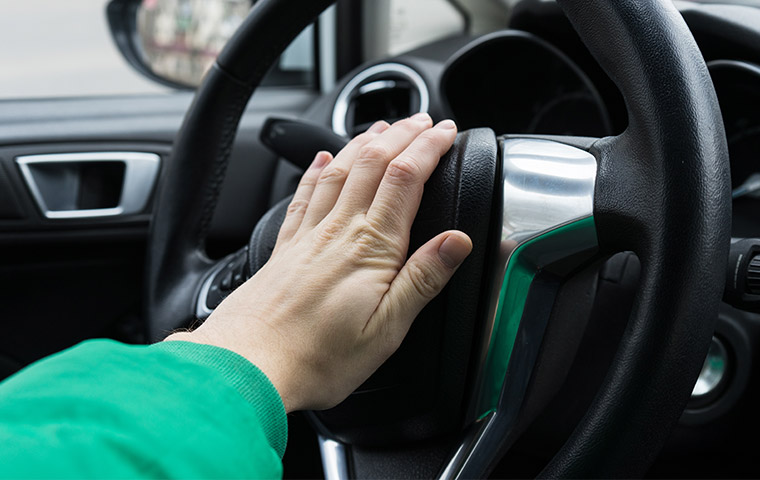Distracted driving is one of the greatest dangers that fleets face on the road. In 2019, distracted driving claimed 3,142 lives, according to the National Highway Traffic Safety Administration. It takes five seconds at 55 miles per hour to drive the length of a football field. A driver taking their eyes off of the road for even five seconds puts everyone at risk.
To combat the problem, Azuga has created a dashcam with artificial intelligence that can detect driving distractions. When it detects these distractions, it will first alert the driver, giving them a chance to correct their error. If their distraction continues, however, the software will notify the fleet manager to take corrective action. It’s immensely crucial to limit distracted driving as much as possible to not only keep fleet drivers safe but everyone on the road. What does distracted driving mean, and how can dashcam AI prevent it?
Types of Distracted Driving
The CDC pinpoints three different types of distraction on the road.
- Visual: A visual distraction is when the driver takes their eyes off the road. This can mean checking a text, looking for something inside the car, or even briefly closing their eyes due to drowsiness.
- Manual: A manual distraction consists of taking one’s hands off of the wheel. If a driver reaches into the back seat, fiddles with the radio, or eats a hamburger while driving, they engage in a manual distraction.
- Cognitive: Even if a driver has their eyes on the road and their hands on the wheel, they can still become distracted. Taking one’s mind off of driving also counts as a form of distraction. This may mean driving while emotionally distressed or angry.
These distractions are dangerous and pose a threat both to the driver and others on the road. It is crucial to limit all three types, and dash cam AI can help drivers do so.
Sources of Distraction
Cell Phone Use: Cell phone use is the most common type of distraction on the road today. The National Safety Council found that one in every four accidents occurs due to talking or texting on cell phones. People either use them for communication or navigation, but either way, they are a dangerous distraction on the road. They’ve become such an integral part of our lives that people don’t even think twice before reaching for them. Eliminating cell phone use while driving would be a significant step towards reducing accidents.
Drowsy Driving: Fleet drivers are especially prone to drowsy driving due to long hours spent on the road. The ELD mandate and HoS regulations have lowered the risk of drowsy driving significantly, but the problem still exists. Driving tired can have the same effect on the brain as driving under the influence of alcohol. Going 20 hours without sleep has the same effect on the mind as having a blood-alcohol level of 0.08%. Fatigued drivers are three times more likely to be in an accident, so it’s crucial to limit drowsy driving wherever possible.
Eating While Driving: Eating while driving is another problem that fleets often run into due to their drivers’ long hours spent on the road. Fleet drivers must know they are three times more likely to be in an accident if they eat while they’re driving. Fast food restaurants make it so easy to fall into this trap, so it is a necessity that drivers be accountable for this dangerous behavior.
How the AI Dashcam Can Help
The AI dashcam is a solution to the epidemic of distracted driving. It uses Cloud-AI technology to detect unsafe driving behaviors and provide managers with data that helps them make decisions to keep their fleets safe. The dashcam can detect a variety of common distractions such as:
- Eating and Drinking
- Using a Phone
- Smoking
- Wearing a Mask
- Yawning or Fatigue
- Face not visible
- Eyes Not Focused
- Camera Obstruction
When the camera detects these driving events, it sends the video through the AI engine, which analyzes the videos and looks for distraction events, providing tags that make it easier for fleet managers to determine the causes of distraction.
Furthermore, it will alert the driver so they can correct their behavior. Everyone makes mistakes, and if the issue is corrected, the fleet manager will not be notified in real-time. However, if the issue persists, the driver is causing danger on the road, and the fleet manager will be notified.
Conclusion
Azuga’s AI dashcam is necessary to keep drivers safe from distractions on the road. With a dashcam to monitor drivers, fleet managers can rest assured that their employees are in good hands.








